Genre: Platformer Developer: Tiertex Design Studios Publisher: U.S. Gold Players: 1 Released: 1993
Star Wars was a slightly strange 8-bit platformer released for NES in ’91, Game Boy in ’92, then Game Gear and Master System in ’93. Surprisingly, Game Gear is considered to have the best version, for offering a bit of exclusive content. I’m not really a fan of the modern Star Wars movies, but I love the original three films, so I’m drawn to games like this, which were created when only the original films existed. This cart is loosely based on A New Hope from 1977, so there’s no Yoda, since he gets introduced in the second film, The Empire Strikes Back.
There are two difficulty settings, Cadet or Jedi, but we can forget about the Jedi setting, which increases the enemies and damage, plus it introduces falling-damage. So yeah, we’re all cadets. Gameplay is mostly appealing for its controls, which seem like a revised version of the old Mario controls on NES. Button 1 is for attacks, plus it’s held down to make characters run faster (and jump farther). Button 2 is to jump, so it’s just like Mario, except these guys don’t jump on enemies. Rather, they shoot them with unlimited laser shots, and they’re faster as they run and leap everywhere. There’s a definite cartoon style as our heroes’ best choice is often to run and jump clear over enemies, instead of stopping to shoot them, which never offers any power-ups or rewards. It often feels chaotic, with pipes to get lifted, and reach other places. There’s often a sense of being lost.
The barren deserts of Tatooine serve as interlude sections, and these are probably the best-looking stages, with a background that almost looks like a photograph. (These exclusive stages take the place of the overhead roaming in the other versions.) The only law of the desert is survival. Luke simply runs and jumps right, dodging gunfire as he shoots Jawas, Tusken Raiders, and Stormtroopers! These sections make me wish the whole game was like this, but these sections are over in a flash, and then it’s back to some maze area again, which becomes the main impression of the whole title.
The Force is strong with the graphics, which are colorful and clear. Most enemies are from the film, and we start by controlling an obvious sprite of Princess Leia, running around and shooting Stormtroopers, as she delivers that map to R2-D2. This first stage is the other Game Gear exclusive, then it switches to Luke Skywalker as the main character. A few stages end by reaching a little sprite of R2-D2, and there are full-screen images of him, C-3PO, Alec Guinness, and Harrison Ford. Although the scenery can often look like any old game, the scattering of Star Wars content keeps it more interesting, as we never know which characters or scenes might show up next. We can also choose to play as Han Solo or Princess Leia after Luke finds them, and they have slightly different abilities, such as Han having a better gun (of course). Han and Leia can only die once before they need to be revived by Obi-Wan Kenobi, which is a rather pointless complication, and their lives are also more limited than Luke’s lives, which is similarly pointless, especially that all three have very similar gameplay. The music also changes depending on who we choose, and Han Solo’s theme is one of the best tracks.
The sound effects are pretty basic, which is fine. There’s no jumping sound, but it probably makes sense since we’re always hearing the sounds of our laser guns firing and hitting enemies or objects. Unfortunately, most of the music is bad, and it’s probably the worst aspect of this title. There are a few good songs that stand out, like the title theme, the desert theme, the Cantina song, and Han’s theme, but I dislike the tracks that remix the Star Wars theme, or remix the Cantina song, looping every few seconds. The rest of the music mostly just sounds like filler, and it’s always restless and busy. Most music sounds like it could have been from any game, so it sounds classic in a way but uninspired. Different versions of this title have different soundtracks, but they’re fairly similar, and none of them sound great. The Game Gear’s volume is best turned down low, and even then, the music is sometimes annoying as it whines and hums along. It could also be muted altogether, but it’s nice to have sound effects for the action on-screen.
The soundtrack alone can make us want to take a break and being stuck or lost in a maze area can definitely make us want to put down the console; however, I find that later on, I’ll usually come back to it for some more chaotic action. It’s definitely a title for the Game Gear to be plugged into the wall, so we can leave it on, and return to it in short bursts. I can’t imagine anyone just sitting down and playing through it, without taking breaks for all the aggravation. The stages become easier once we learn where to go and what to do, so the gameplay improves as we get used to it. It’s just a drag that the stages can be so frustrating until we get used to them.
With about 25 stages, this adventure is long, especially for a portable, and it starts to become frustrating by the third stage! Luke explores a sandcrawler to find R2-D2, and this stage will probably take a few dozen attempts (!) before finally learning exactly where to go, surviving all the enemies and dangers in the process. Luke has eight continues, though, so it’s a ton of lives (nine sets of three lives, so it’s 27, plus any health and 1-ups that he finds, plus the additional lives of Han and Leia). Dying always brings us back to the start of the same stage. After another nice stretch of Tatooine desert, Luke enters a cave for a maze full of spikes, bats flying everywhere, and giant green caterpillars. This is an example of when there seems to be nothing from Star Wars at all, except that at the end, Obi-Wan Kenobi gives Luke his father’s lightsaber.
Once acquired, the lightsaber makes that familiar humming when Luke swings it, and it’s fun to walk up to enemies and slash them; however, it’s a short-range attack in a game that calls for long-range attacks, so it probably won’t be used much, in favor of shooting enemies across the screen. The lightsaber is disappointingly worthless!
Despite the emphasis on exploration, it often feels like a chore, because it usually means a maze full of enemies, plus environmental hazards that cause a lot of dying and re-starting, while learning where to go. Taking damage often seems unavoidable, but it can also be blamed on running too fast through the stages (so we run straight into enemies or gunfire). There’s also a knock-back when our heroes take damage, which doesn’t seem to matter until we reach areas like that cave, where Luke has to jump on small ledges over lava and spikes, with bats constantly knocking him down!
Despite being given so many lives, mine always drain away on the first-person flying stage. Asteroids zoom past as we pilot the Millennium Falcon through space, which looks great as the Game Gear’s little screen becomes the windshield. But the asteroid damage seems unavoidable, so it’s always over quickly. Apparently, the number of shields depends on how many shield-icons were collected during the regular gameplay up to that point, and for me at least, it always turns out that not enough were collected, so there’s no way to survive.
Thankfully, there are built-in codes for stage select and infinite life, so if nothing else, Star Wars is playable, even if certain stages seem impossible. And it’s probably better to level-skip around, rather than trying to push through it legitimately, which can be an exercise in frustration. Level-skipping ahead reveals a couple first-person flying stages that are much easier, and they’re fun to simply move a target around to shoot TIE fighters. It doesn’t really make sense for these later flying stages to be so easy, while the first one is so impossible! The overall difficulty of the title just seems inconsistent and broken. The last couple stages inside the Death Star are very challenging, with spikes and enemies everywhere, pipes, and tiny platforms to jump on. There’s also a “boss fight” against some machine, which represents the Death Star’s tractor beam generator. The fight involves dodging multiple streams of gunfire, and shooting at the machine, while jumping from one ladder to another – it sounds and looks difficult, but it’s actually very easy.
The final stage is a mild vertical-scrolling shooter, meant to represent the famous trench run scene, which it doesn’t resemble at all! It does look cool though, as this trench is made of blue metal. It also makes no sense that this very last stage is so easy. After dodging a few enemies and shooting the right spot, we see a cut-scene of the Death Star turning into a blank white screen. That’s it! A lame non-ending is always disappointing, especially for a difficult game like this. Apparently, there’s more of an ending if someone earns a full 100% completion score for every goal in the game but forget it! The ending can just be watched through the level-select. It’s also disappointing when we realize that Darth Vader never appears, besides the Game Over screen. If there was one thing I’d want in a Star Wars game, it would probably be a nice lightsaber duel with Darth Vader!
Occasionally, there are animated cut-scenes that look great, especially the intro, which recreates the first scene of the film, with that Star Destroyer flying overhead! Stages also have details from the film (once in a while), like the Cantina bar has that song from the film, multiple Greedo aliens walking around, a band performing, and aliens drinking beer! Later, running through the Death Star includes TIE fighters parked in the background. Such details are great, but most scenery still looks like any old game. For example, the Cantina’s surrounding stage is a mess of running past doorways and jumping over piles of boxes.
At the end of the day, we have a traditional 8-bit platformer based on a great film. There is a mix of colorful graphics, movie characters who are fun to control, stages that mostly seem generic (except for enemies from the films), nice cut-scenes, and mostly bad music. The positives outweigh the negatives, and as mentioned, most of the appeal comes from the tight controls, and the visceral enjoyment of running, jumping, and shooting everywhere. Despite its difficulty, cheap deaths, and maze-like stages, Star Wars is still enjoyable, and offers more content than most people will ever get through, so there’s always more to see, and more replay value. The Game Gear’s platformers were mostly known for the Sonic series, so any other fun platformers are a welcome addition to its library.
Score: 7 out of 10

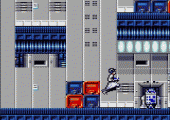
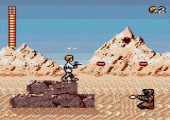
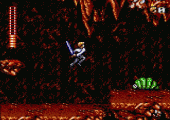
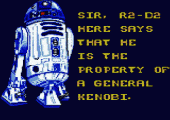
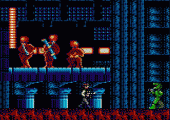
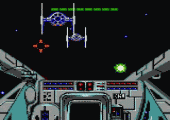
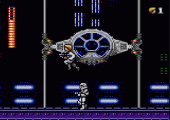
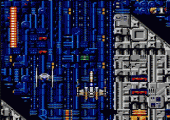
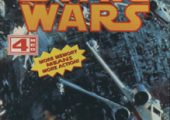
A very good addition to the Game Gear Library. This heterogenous (in level design mostly) sidescroller is THE Star Wars game that could have compete with the SNES Super Star Wars series if it was ported to Sega Megadrive/Genesis (with updated sound and graphics). CONCLUSION: 8/10